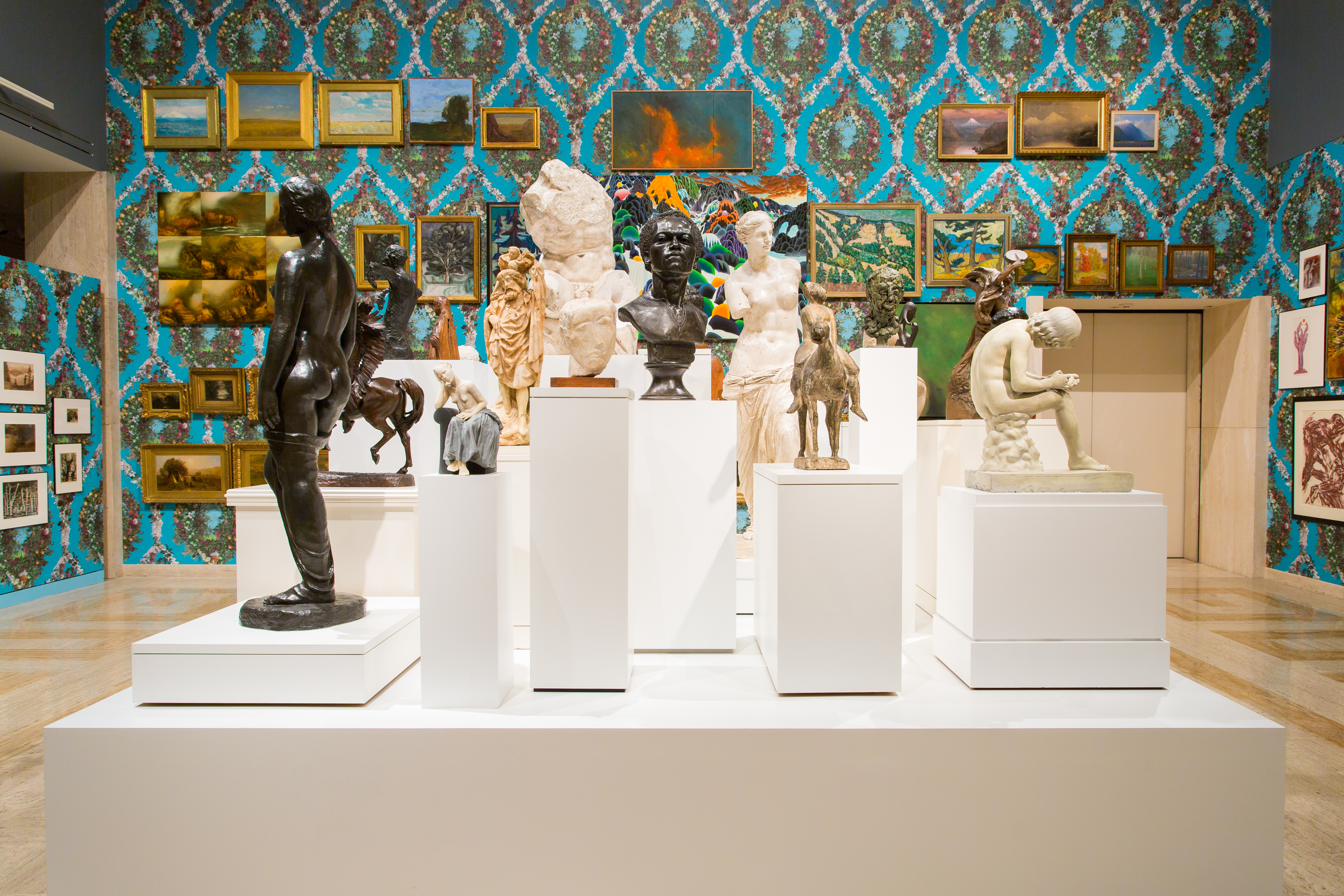Paradise: Fallen Fruit

© Paradise by Fallen Fruit (David Burns and Austin Young), Portland Art Museum, 2015
2015
Invited by the Portland Art Museum to create a new site specific artwork, Paradise is conceived and developed by artist-duo Fallen Fruit (David Allen Burns and Austin Young) whose wide-ranging works use the lens of fruit to examine concepts of place, culture, history, and issues of representation, often researching and displaying collections in unconventional ways.
For centuries, ideas of paradise have held a powerful place in the human imagination and found visual expression in works of art. From lofty religious imagery depicting a perfect heaven or Garden of Eden, to earthly associations marking places of incomparable or pristine beauty, paradise is often represented through expansive idealized landscapes, sparsely populated by humans to evoke harmony, peace, and happiness.
In their installation, Fallen Fruit thematically explores broad concepts of paradise and its relationship to complex narratives of westward expansion, Manifest Destiny, and the history of the greater Northwest by drawing exclusively from the vast collections of the Portland Art Museum. Founded in 1892, the Museum is the 7th oldest art museum in the United States and today houses over 47,000 works of art in nine major collecting areas. For a region rich in natural beauty, it is not surprising that landscapes are well represented across collections, and that the first painting to enter the permanent collection is a landscape of Eastern Oregon by noted American artist Childe Hassam (08.1).
A key feature in Fallen Fruit's installation work is their creation of custom, fruit-themed wallpapers for each site. In Portland, the Victorian inspired apple wallpaper was created with photographs taken over the course of a year at a century old orchard in the Hood River Valley. The apple wallpaper speaks to the Northwest's 19th century history as a destination for newly arrived Anglo-European settlers who brought apples west to plant in a region that was sold as a lush new paradise at the end of the Oregon Trail. But the wallpaper might also be understood as a type of overlay that conceals painful histories of displacement of indigenous peoples and extraction or overuse of natural resources.
By mining the Museum's collections, Paradise is a sort of immersive collage whereby Fallen Fruit layers works of art to create alternative ways for us to consider how cultures make a place, and a place makes cultures. Fallen Fruit uses the collection as a mirror for us to look into, and consider our own place in this ever-changing landscape that has been so radically transformed over the last two centuries.
Fallen Fruit is an art collaboration originally conceived in 2004 by David Burns, Matias Viegener, and Austin Young. Since 2013, David and Austin have continued the collaborative work.
Paradise is co-curated by Fallen Fruit in partnership with Museum staff from the Education, Curatorial, and Collections Departments.
Paradise is part of Fallen Fruit Portland, a suite of site specific projects taking place throughout the city in Fall 2015 and presented by Caldera with funding by the Creative Heights grant program of the Oregon Community Foundation.
- Exhibition Title
Paradise: Fallen Fruit
- Date
2015
- Organized by
Portland Art Museum
- Begin Date
2015-10-24
- End Date
2016-01-17






